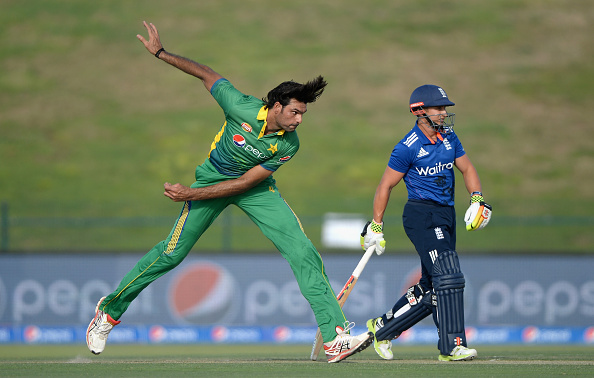Saj Sadiq on the unsettling tales of suspensions in Pakistan and the feeling lessons remain unlearned
March 5, 2017 appeared to herald a new beginning for the topsy-turvy world of Pakistan cricket. It was the day of the long-awaited arrival of the Pakistan Super League (PSL) to its natural home in Pakistan. The final of the high-profile T20 tournament, played with much fanfare and extraordinary security, was also made special by the participation of foreign players such as Darren Sammy, Chris Jordan, Marlon Samuels and Dawid Malan.
Although this was not an international game by any stretch of the imagination, the impact of such an event was felt almost immediately. The positive statements regarding the possible visit by an International XI in September as well as bullish assessments of the economic uplift were well received in the country starved for international cricket since the horrific events of Lahore in 2009.
As is customary in these parts, the PSL management and government were quick to pat themselves on the backs for this achievement. For a few days after the last ball was bowled in Lahore and Peshawar Zalmi walked away with the spectacular trophy, the country celebrated like it had not done for years.
It would have been easy to be swept away with the mass euphoria of a nation which craves for good news, but behind the scenes the sinister menace of corruption refused to go away.
The news that two of Pakistan’s cricketers had been withdrawn from the 2017 edition of the PSL on the just second day had been tough to digest for many. That stringent internal processes had helped uncover possible corruption was the only saving grace for a tournament which is fast gaining stature in an otherwise packed T20 league calendar.
Parallels were drawn to 2010 in England when three prominent Pakistan players were caught in a spot-fixing sting organised by a newspaper. It was said that Pakistan cricket would take years to recover from the reputational damage caused by the misdemeanours of Salman Butt, Mohammad Asif and Mohammad Amir. And it did take a few good years before normality returned for Pakistan cricket. It was also said the darkest days of Pakistan cricket were now a chapter in history; lessons had been learnt.
However, beyond the initial shock of the suspension from the PSL of Sharjeel Khan and Khalid Latif, both recent Pakistan representatives, being mitigated in some measure by the progress of the high-octane T20 event, it has since become clear there may be a much-feared ‘tip of the iceberg’ scenario.
It has also been revealed that 7ft 1in Pakistan fast-bowler Mohammad Irfan had been placed under investigation for a similar charge. The bowler admitted to being in touch with a bookie and was suspended pending investigations.
News reports emanating in Pakistan have also named more players who could be involved. Two players from Quetta Gladiators have been named as being summoned by the Pakistan Cricket Board (PCB) for questioning. In addition, Shahzaib Hasan, part of the Pakistan 2009 World T20 winning squad, has been called in. It would appear Pakistan cricket is now heading for another crisis – tragic given the recent extent of goodwill generated from a largely successful PSL.
To have even suggested a situation like this in the aftermath of the 2010 fiasco would have been ludicrous given that the PCB and the ICC had fallen over each other in efforts to wipe out this menace.
The punishments meted out then, plus proactive PCB measures such as workshops and lectures, should have been deterrent enough.
Stringent guidelines along with security officers attached to teams were also measures to stop Pakistan cricket from facing further embarrassment. Yet, suspicious approaches were made to players with what appears to be some degree of regularity and success.
It is clear that the propensity to commit corrupt acts for some players seems to have not diminished due to any of the measures taken by the authorities which is a worrying sign.
In countries where the shelf-life of a player can be a matter of a few international matches, the attraction of making a quick buck must be very strong and, frankly, there is not much any law or guideline can do to stop it.
Add to the mix, the lure of the dollar when it comes to today’s lucrative T20 leagues. Whilst some players can earn a healthy living playing the game fair and square, there are others who feel that they can do much better by taking on instructions from outside sources who can prey on a players’ own insecurities in terms of future contracts.
The PSL, due to its recent success, is now heading towards becoming a huge financial success so the stakes will get higher for its administrators to keep it clean. But, worryingly, there may also be a bigger temptation to brush issues under the carpet.
It is in this context that the PSL’s and PCB’s determination to beat corruption is so commendable.
Only time will tell if that resolve remains with every passing year of the tournament.
Regardless, whether the vigilance of the administrators will result as a credible deterrent to weak-willed players from crossing that line is moot but given the presence of temptation in and around cricket grounds, this remains an uphill battle for all concerned about the integrity of the game across the globe.
The world keeps hearing that corruption at the PSL was just the tip of the iceberg. However with each passing day this iceberg seems to be getting bigger and bigger with more and more names being mentioned.
One only hopes that this issue is dealt with firmly and swiftly by the authorities before it is too late.
This piece originally featured in The Cricket Paper, March 17 2017
Subscribe to the digital edition of The Cricket Paper here












